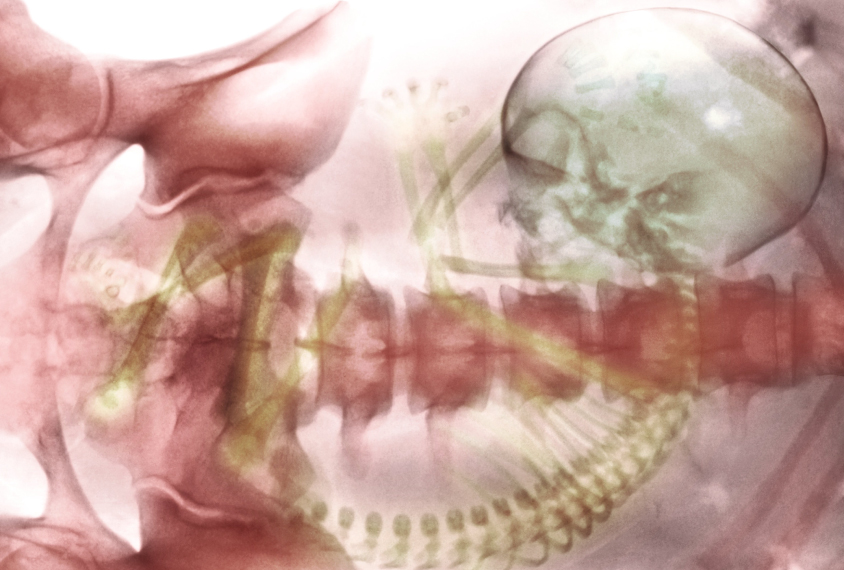
Difficulties with pregnancy, labor may raise child’s autism risk
A large study finds that certain health complications during pregnancy or delivery increase the chances of having a child with autism by 26 percent or more.
Certain complications during pregnancy or delivery increase the chances of having a child with autism by 26 percent or more, according to a study of more than 400,000 mother-child pairs1.
The riskiest complications are abnormal position of the baby in the womb, severe deprivation of oxygen to the baby at delivery and preeclampsia, a serious condition involving high blood pressure.
The absolute risk of autism resulting from a difficult pregnancy is small, however, says Michael Fassett, a maternal and fetal medicine specialist at Kaiser Permanente West Los Angeles Medical Center in California. Each year, for every 1,000 women, 1.7 women who have pregnancy complications have a child with autism, compared with 1.3 controls.
Still, the study hints at factors that contribute to autism. “It points [us] in the direction of where we need to look further,” Fassett says.
Many of the factors compromise a baby’s supply of oxygen and nutrients, he says, and could alter brain development in ways that boost autism risk. The study appeared in January in the American Journal of Perinatology.
The results jibe with a study published in November that showed a slight uptick in autism risk among babies exposed to their own feces in the womb, which can lower their oxygen supply.
But the study does not reveal whether birth complications trigger autism or whether the condition somehow leads to birth complications, says Tonya White, associate professor of pediatric neuroimaging at Erasmus University in Rotterdam, the Netherlands. “The [researchers] did a nice job showing a link between autism and pre- and perinatal complications,” she says. “What’s unclear is the direction of the link.”
Complicated matter:
Fassett’s team combed through medical records of 594,638 women and their children, born in the Kaiser Permanente healthcare system in Southern California between 1991 and 2009. They focused on 401,660 children born after 28 weeks’ gestation who have no birth defects. About 6,200 of the children have an autism diagnosis.
Nearly 19,000 of the women had preeclampsia or a condition called placental abruption, in which the placenta separates from the womb, usually in the last few weeks before birth. And almost 100,000 of the women experienced complications during delivery. The complications arose from an unusually large or abnormally positioned baby, an oxygen debt at delivery that sometimes required resuscitation, or an umbilical cord that was compressed or wrapped around the baby’s neck.
The researchers controlled for known autism risk factors, such as sex and premature birth. They also controlled for various maternal factors, including age, education and access to prenatal care.
Children born to women who had preeclampsia were 26 percent more likely to have autism than those whose mothers did not have preeclampsia. Babies who were in an unusual position in the womb showed an increased risk of 39 percent, and those deprived of oxygen during delivery were 29 percent more likely to have autism. No other type of complication was significantly tied to autism.
Dose–response:
The researchers also found that having more than one complication during birth raises the chances of autism by 34 percent compared with having no complications. And children who had complications both before and during birth have a 44 percent increase in risk.
The results support a link between maternal high blood pressure and autism, a connection backed by smaller studies, says Kristen Lyall, assistant professor at the A.J. Drexel Autism Institute in Philadelphia, who was not involved in the new work.
Fassett’s team found that autism risk is greater in children whose mothers had preeclampsia for two or more days than in those whose mothers had no complications. Children whose mothers had preeclampsia for less than a day have no increased risk for autism. “When you see a dose-response like that, it’s supportive that it’s real,” Lyall says.
One limitation of the study, Lyall says, is that the researchers did not control for maternal obesity or weight gain during pregnancy, both of which have been linked to autism risk.
Fassett and his team are studying the same women and children to identify other factors linked to autism.
References:
- Getahun D. et al. Am. J. Perinatol. 34, 295-304 (2017) PubMed
Recommended reading

Expediting clinical trials for profound autism: Q&A with Matthew State

Too much or too little brain synchrony may underlie autism subtypes
Explore more from The Transmitter

This paper changed my life: Shane Liddelow on two papers that upended astrocyte research
Dean Buonomano explores the concept of time in neuroscience and physics

